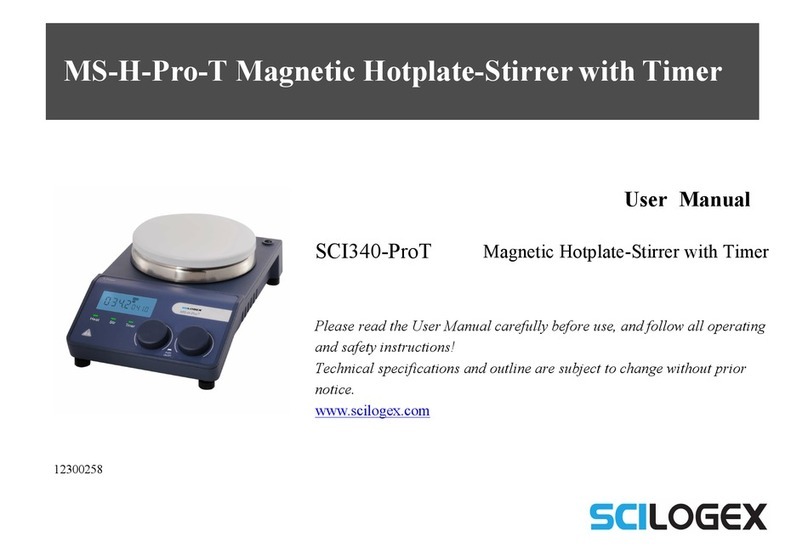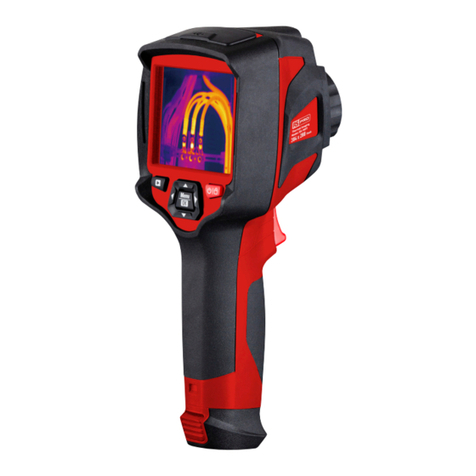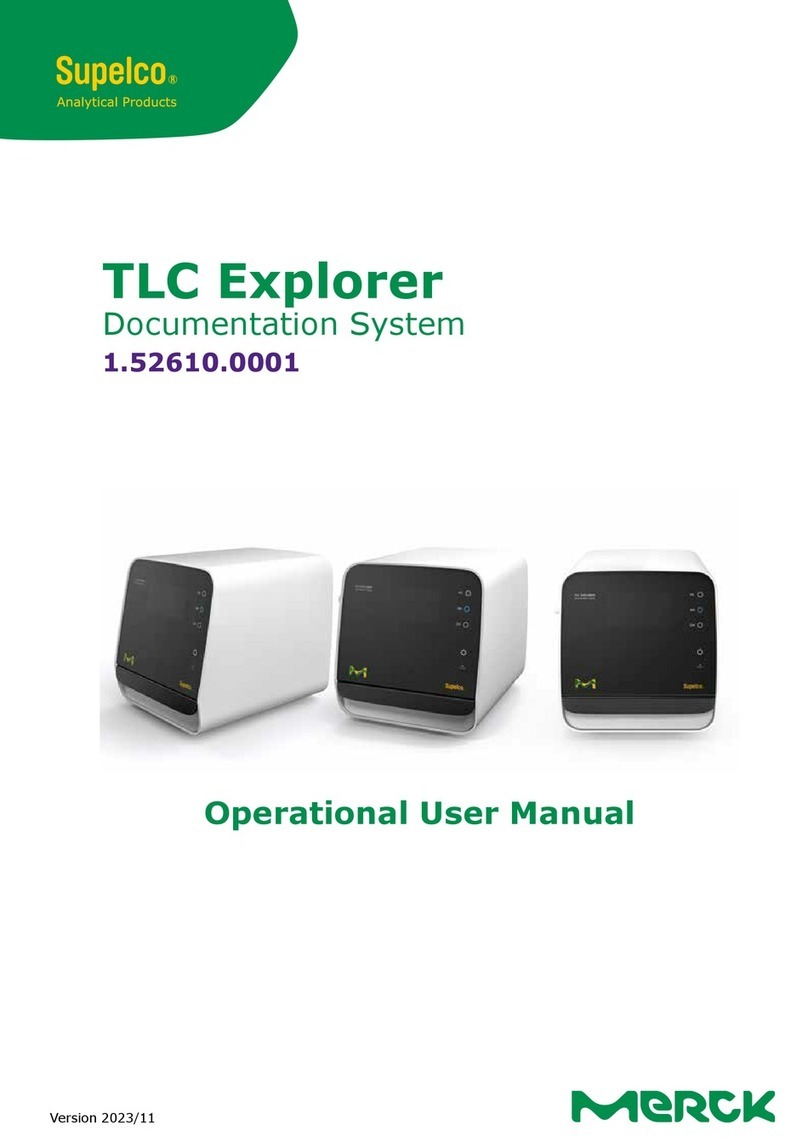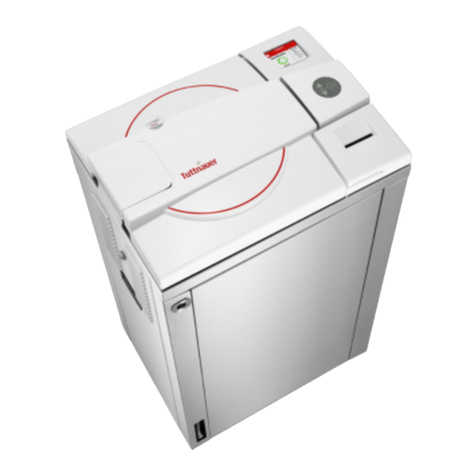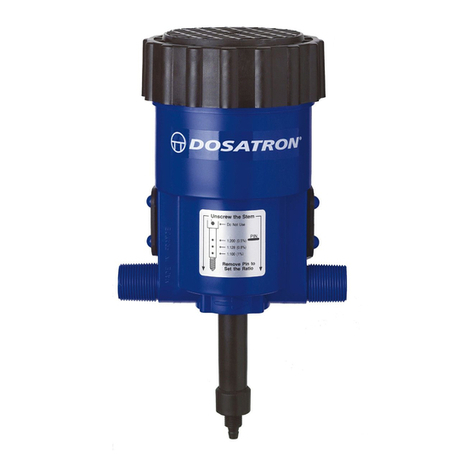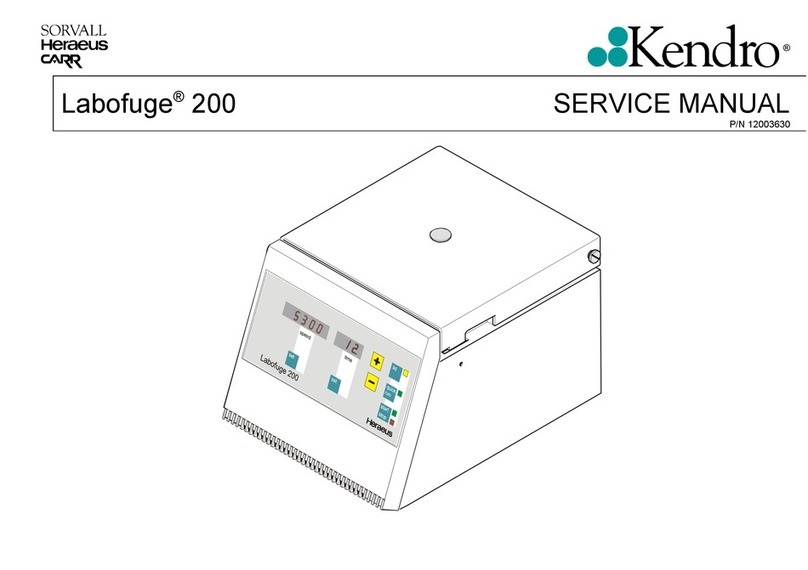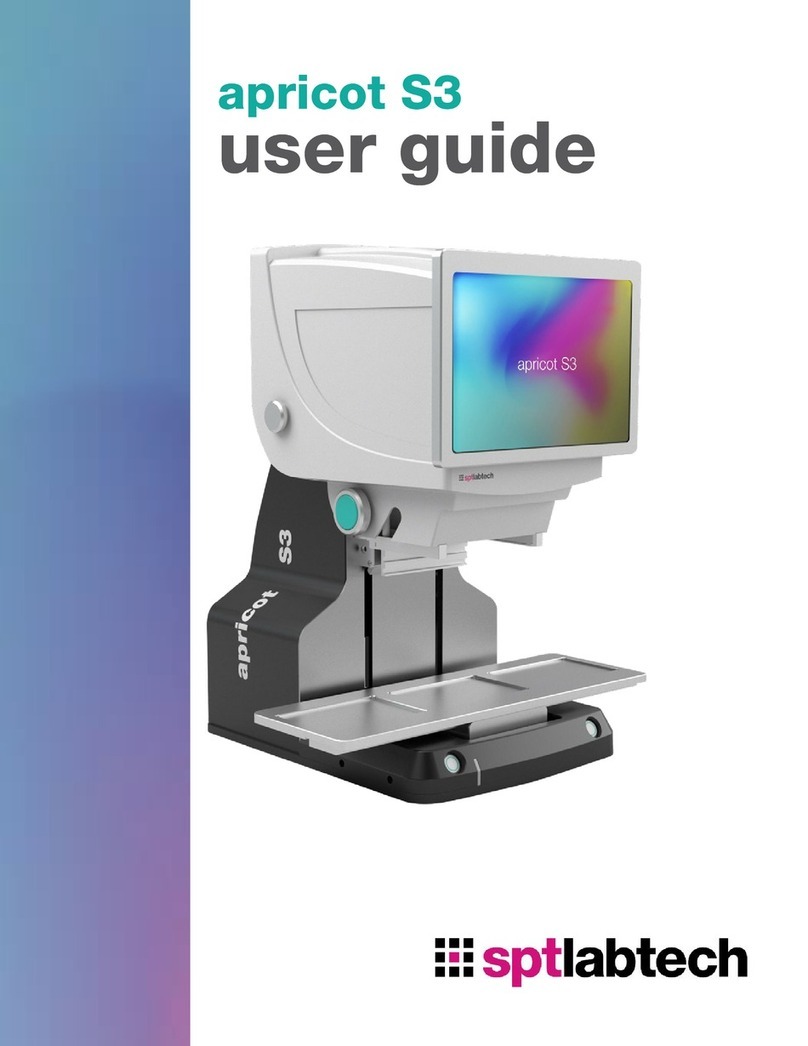CleanControlling C PS2-ESD User manual

FOCUS ON PARTICLES
PARTICLE
SUCTION EXTRACTION
SYSTEM
INSTRUCTION MANUAL

Particle suction extraction system item no.: 6003490 1/60 Date 27.07.2020 / Version 1.0
You must read these operating instructions and all relevant documents
before using the system.
Document C|PS² ESD particle suction extraction system
Item no.: 6003490
Operating instructions –English translation
Version V 1.0 / Date 27.07.2020
Other documents relevant for this product:
•EC Declaration of Conformity for FESTOOL mobile dust extractor
•Original operating instructions –FESTOOL mobile dust extractor
CTL MINI I, CTL MIDI I, CTL MINI, CTL MIDI
•Original operating instructions for differential pressure measuring
instrument testo 526-1
CleanControlling GmbH
Gehrenstrasse 11 a
D-78576 Emmingen-Liptingen
Tel.: +49 (0)7465 929678-0 Fax: +49 (0)7465/929678-10
Website: www.cleancontrolling.com/en/ Email: info@cleancontrolling.de
Copyright © 2019 CleanControlling GmbH

Contents
Particle suction extraction system item no.: 6003490 2/60 Date 27.07.2020 / Version 1.0
Table of contents
1. Safety ................................................................................................................... 4
1.1. Basic safety instructions ............................................................................................... 4
1.1.1. Terminology....................................................................................................... 4
1.1.2. Safety symbols and representations used.......................................................... 4
1.1.3. Mandatory symbols............................................................................................ 5
1.1.4. Warning signs .................................................................................................... 5
1.1.5. Conformity, guidelines and directives................................................................. 6
1.1.6. ESD conformity as per IEC 61340-5-1 ............................................................... 6
1.1.7. Operator ............................................................................................................ 6
1.1.8. Obligation and liability ........................................................................................ 6
1.1.9. Obligation to instruct .......................................................................................... 7
1.1.10. Designated use.................................................................................................. 7
1.1.11. Organizational measures and the owner's obligations........................................ 7
1.1.12. Informal safety measure..................................................................................... 7
1.1.13. Training of staff .................................................................................................. 8
1.1.14. Specific hazardous points .................................................................................. 8
1.1.15. Maintenance, servicing and fault repair.............................................................. 8
1.1.16. Structural changes to the device ........................................................................ 8
1.1.17. Cleaning the device ........................................................................................... 9
1.1.18. Noise from the device ........................................................................................ 9
1.1.19. Decommissioning and disposing of the device................................................... 9
1.1.20. Change of owner ............................................................................................... 9
1.1.21. Guidelines for a safe work area........................................................................ 10
1.2. Defective device ......................................................................................................... 10
1.3. Further use of components after suction extraction..................................................... 10
2. Description ........................................................................................................ 11
2.1. Particle suction extraction system with cyclone unit .................................................... 12
2.2. Particle suction extraction system without cyclone unit ............................................... 13
3. Structure ............................................................................................................ 14
3.1. Particle suction extraction system (example without flushing unit) .............................. 14
3.2. ESD trolley.................................................................................................................. 15
4. Initial operation ................................................................................................. 17
4.1. Initial operation ........................................................................................................... 28
4.2. Initial operation without cyclone unit............................................................................ 30
5. Particle suction extraction process................................................................. 31

Contents
Particle suction extraction system item no.: 6003490 3/60 Date 27.07.2020 / Version 1.0
5.1. Screwing on or replacing the particle collection jar...................................................... 31
5.2. Attaching or replacing the particle trap........................................................................ 32
5.3. Replacing or inserting the mesh filter .......................................................................... 33
5.4. Flushing the mesh filter............................................................................................... 34
5.5. Setting and switching on the suction unit .................................................................... 35
5.6. Carrying out the particle suction extraction procedure................................................. 35
5.7. Instructions on using the suction and brush nozzles ................................................... 38
5.8. Differential pressure measurement ............................................................................. 41
5.8.1. Connection of the differential pressure measuring device ................................ 42
5.8.2. Setting the differential pressure measuring device........................................... 43
5.8.3. Using the timer................................................................................................. 44
6. Cleaning ............................................................................................................. 45
6.1. Cleaning equipment and carrying out thorough cleaning............................................. 45
6.1.1. Preparing cleaning equipment and cleaning..................................................... 45
6.1.2. Cleaning hoses ................................................................................................ 47
6.1.3. Cleaning the nozzles........................................................................................ 49
6.1.4. Cleaning the system ........................................................................................ 51
6.2. Determining the blank value after cleaning ................................................................. 54
6.2.1. Determining the blank value with or without the prefilter .................................. 54
6.2.2. Determining the blank value............................................................................. 55
7. Maintenance ...................................................................................................... 56
7.1. Replacing the suction unit filter and emptying the dirt container.................................. 56
8. Scope of delivery/equipment ........................................................................... 57

Safety
Particle suction extraction system item no.: 6003490 4/60 Date 27.07.2020 / Version 1.0
1. Safety
1.1. Basic safety instructions
1.1.1. Terminology
ESD = Electrostatic discharge
ESDS = ESD-sensitive components
EPA = ESD-protected area
1.1.2. Safety symbols and representations used
Format for warnings
Signal words are used in conjunction with safety warning symbols to highlight
warnings.
Signal words
The three signal words WARNING, CAUTION and NOTICE used in
these instructions indicate possible injury or damage to equipment.
The signal words may also precede the main text and have the following
meanings:
A WARNING refers to a potential danger which can cause serious
injuries or even death if not avoided.
CAUTION refers to a potential danger which can cause slight injuries if
not avoided.
The word NOTICE indicates a potential danger which can cause damage
to the device.
Other symbols
The following symbols are also used.
The text next to this symbol provides additional important information.
Text featuring this symbol requires you to take action.
•This symbol is a bullet point for lists.

Safety
Particle suction extraction system item no.: 6003490 5/60 Date 27.07.2020 / Version 1.0
1.1.3. Mandatory symbols
Mandatory instructions and symbols are used within warning symbols or precede
highly important points in the main text. They have the following meanings:
Read the instructions before you undertake any work.
Disconnect the mains plug before you carry out any work on the
device.
1.1.4. Warning signs
Warning signs are attached to different points on the device. They have the
following meanings:
Electrical components behind these covers are live.
Risk of an electric shock!
Switch off the device and disconnect the power supply before
you remove the covers.
General warning
This warning symbol warns against a general source of hazard.
Caution –ESD-protected area
Observe preventive measures when handling components susceptible
to damage from electrostatic discharge.
Risk of damage to ESDS. Do not place any electronic
components or assembly groups on this surface!
This warning symbol warns against damage to ESDS if they are
placed on labeled surfaces.

Safety
Particle suction extraction system item no.: 6003490 6/60 Date 27.07.2020 / Version 1.0
1.1.5. Conformity, guidelines and directives
The device and its components, modules and assembly groups comply
individually and as a whole with the current applicable safety standards as
specified in European Union CE Directives (see the enclosed EC Declaration of
Conformity).
1.1.6. ESD conformity as per IEC 61340-5-1
The device and its associated components, modules and assembly groups
comply individually and as a whole with the requirements specified in IEC 61340-
5-1 with regard to work surfaces, storage shelves and transport trolleys (see
accompanying ESD certificate of conformity).
1.1.7. Operator
Only trained staff may operate the C|PS² ESD particle suction extraction system.
More specifically, only staff who have undergone the ESD training stipulated by
the owner may operate the C|PS² ESD particle suction extraction system. The
owner must hold refresher training sessions every 24 months.
The manufacturer or persons authorized by the manufacturer to provide training
will give training on the device's use.
Persons whose ability to react is impeded by drugs, alcohol, medication or similar
must not operate the C|PS² ESD particle suction extraction system. Region-
specific age regulations must be observed.
1.1.8. Obligation and liability
The C|PS² ESD particle suction extraction system has been built to state-of-the-
art standards and in line with established safety regulations. However, using the
device may possibly pose a threat to life and physical well-being for the user or
third parties or adversely affect the device or other assets.
The device must be used for its designated purpose only.
Any faults which could jeopardize safety must be rectified immediately.
Our General Terms and Conditions of Sale and Delivery apply to the warranty
and liability.

Safety
Particle suction extraction system item no.: 6003490 7/60 Date 27.07.2020 / Version 1.0
1.1.9. Obligation to instruct
All persons who work on and with the device and are responsible for the device
must read and understand these operating instructions and must comply with all
points in the instructions.
CleanControlling GmbH does not accept any liability or warranty for any
damage caused by staff who have received inadequate instructions or who
have not received any instructions.
1.1.10. Designated use
The device is used to suction and extract particles in line with the requirements
for particle suction extraction.
Any other use other than the one described above is forbidden since improper
use could cause a threat to life and physical well-being.
The suction unit or its suction hose may only be used in combination
with the C|PS² ESD particle suction extraction system.
1.1.11. Organizational measures and the owner's obligations
The owner must appoint someone who is responsible for the safe operation of the
C|PS² ESD particle suction extraction system and for coordination of all work with
the C|PS² ESD particle suction extraction system.
The owner must appoint an ESD coordinator who is responsible for all ESD
aspects related to working with the C|PS² ESD particle suction extraction system
in line with EN 61340-5-1.
The owner must provide the required personal protective equipment. All safety
systems must be checked on a regular basis.
The owner must ensure that the C|PS² ESD particle suction extraction system is
inspected on a regular basis to ensure it complies with ESD conformity
requirements. The C|PS² ESD particle suction extraction system needs to be
included in the owner's ESD control program plane to ensure this is the case.
Sampling of ESDS with C|PS² ESD particle suction extraction system is only
permitted in suitable, designated ESD-protected areas (EPA).
The owner or the ESD Coordinator is responsible for ensuring correct
environmental conditions/rooms.
1.1.12. Informal safety measure
The operating instructions must be kept on the device at all times. In addition to
the operating instructions, general regulations and other binding regulations on
accident prevention and environmental protection must be observed.
You must keep all safety instructions and hazard warnings in a legible condition
and replace if necessary.

Safety
Particle suction extraction system item no.: 6003490 8/60 Date 27.07.2020 / Version 1.0
1.1.13. Training of staff
Only trained and briefed staff are permitted to work with and on the device.
The staff's different responsibilities are specified in the following table:
Task
Briefed technical staff
Specialist
Use/operation
x
Also observe Section 1.1.7
Fault finding
x
Fault repair
Authorized service
technicians
Maintenance
x
Repair
Authorized service
technicians
1.1.14. Specific hazardous points
Electrical components behind these covers are live.
Risk of an electric shock!
Switch off the device and disconnect the power supply before you
remove the covers.
1.1.15. Maintenance, servicing and fault repair
Do not perform work on the device until the device has been disconnected from
the mains power supply.
Before putting it back into operation, check that all covers, screw connections and
safety systems have been fitted as per regulations and check that they work
correctly.
Perform all setting, servicing and inspection work correctly within the required
periods.
1.1.16. Structural changes to the device
Authorization from the manufacturer is required for any modifications or retrofits.

Safety
Particle suction extraction system item no.: 6003490 9/60 Date 27.07.2020 / Version 1.0
1.1.17. Cleaning the device
Correct functioning of the device can only be guaranteed for a longer period of
time if the device is kept spotless and is cleaned on a regular basis using
customary methods.
Clean with mild, non-scouring, non-scratching products only. Never use
aggressive cleaning agents such as solvents.
Handle materials and substances used, such as solvents and lubricants, in a
correct, environmentally friendly way.
1.1.18. Noise from the device
The sound pressure level from the device can reach up to 75 dB(A).
1.1.19. Decommissioning and disposing of the device
This device is labeled in accordance with the European Directive on waste
electrical and electronic equipment –WEEE.
You must comply with applicable local regulations on health, safety and the
environment at all times when decommissioning the device or disposing of parts
of the device.
•You must dispose of the device as electronic waste once its service life
has come to an end. Ask your local waste management company or
CleanControlling where your particular collection point is.
•Sort different materials such as plastic, metal and electronic components
and dispose of them separately.
•Dispose of used liquids safely and correctly, so that they do not cause
damage to health or the environment.
•Dispose of all components safely and correctly as per applicable local
regulations on health, safety and the environment.
1.1.20. Change of owner
Ensure that all components, including spare parts and accessories, are also given
to the new owner if you sell the device. These components include all operating
instructions, manuals, maintenance instructions, other instructions, modifications
and additions that you have received as an owner.

Safety
Particle suction extraction system item no.: 6003490 10/60 Date 27.07.2020 / Version 1.0
1.1.21. Guidelines for a safe work area
•Ensure that work areas and surrounding areas are clean and very tidy and
do not contain any potential hazards. The work area must comply with
local and national safety regulations.
•There must be enough room around the device to work with the system
safely and comfortably and perform adjustment and maintenance work.
•Ensure that cables and hoses are not deformed and cannot be damaged.
•Ensure that the ambient conditions are within the indicated ranges.
•Ensure that no cables or hoses pose a tripping hazard.
•Ensure that the device is only operated in a suitable area (EPA) when
used in connection with ESDS.
1.2. Defective device
A defective device poses a serious risk of injury for operators and other persons.
If the device is not free from defects when in operation and cannot be repaired
immediately, the person in charge must switch off the device and put it out of
service. The device can be defective if:
•The device shows signs of damage
•Electrical components and wires are damaged
•The device does not perform its required function correctly, even after it
has been adjusted
•The device has been stored or not operated for a long time under
unfavorable conditions, such as high humidity or excessively high or low
temperatures.
1.3. Further use of components after suction extraction
•The owner must ensure that components remain undamaged, especially
when sampling electronic components that can be damaged or destroyed
by electrostatic discharges.
•If the components sampled by the C|PS² ESD particle suction extraction
system are reused, the owner is responsible for carrying out subsequent
tests to ensure their intactness.

Description
Particle suction extraction system item no.: 6003490 11/60 Date 27.07.2020 / Version 1.0
2. Description
The mobile particle suction extraction system is used to extract dry, adherent
particles from large surfaces and from specific control areas on workpiece carriers
and in process environments.
The particles are suction-released from the surface by a suction nozzle, brush
nozzle, or flat nozzle, and then sucked in.
This compact, combinable system is incorporated into an ESD trolley to protect
ESDS. The ESD trolley features a suitable anti-static work surface to ensure easy
handling of ESDS.
The ESD trolley provides easy, safe set-up and transportation of the particle
suction extraction system and its associated equipment.
Particle suction extraction system –front view
Particle suction extraction is possible with or without the cyclone unit. The
most suitable process depends on different factors, primarily the specific
application and the degree of contamination.

Description
Particle suction extraction system item no.: 6003490 12/60 Date 27.07.2020 / Version 1.0
2.1. Particle suction extraction system with cyclone unit
The extracted particles are collected in a clean particle collection jar or directly on
a particle trap via the cyclone unit (2).
The filter unit (6) provides overload protection using a special analysis filter (> 5
µm) to protect against an excessively high particle load.
The particles collected in the particle collection jar are transferred to analysis
filters for the subsequent microscopic analysis using secondary extraction (with
an aqueous medium) and then analyzed under a microscope.
Variant A operating principle: Particle suction extraction system with cyclone unit
Suction extraction via the cyclone unit is particularly suitable for large component
surfaces with greater particle loads.
This dry particle extraction system is very economical compared to wet extraction
due to the absence of liquid extraction media, the reduced logistics workload and
the easily delimited control areas.

Description
Particle suction extraction system item no.: 6003490 13/60 Date 27.07.2020 / Version 1.0
2.2. Particle suction extraction system without cyclone unit
The particles are extracted directly via the filter unit and separated from the air
stream using a special analysis filter (>5µm).
The analysis filter can be analyzed using a microscope directly after suction
extraction and any downstream flushing.
The flushing unit can be used to prepare particulates on the filter for analysis (see
Section 5.4)
Variant B operating principle: Particle suction extraction system without cyclone unit
Direct suction extraction via the filter unit is suitable for small surfaces with a light
particle load, such as on workpiece carriers or printed circuit boards in the
process environment.
Particles are quickly collected, meaning interruptions to processes are kept to a
minimum.
The specially developed flushing unit allows homogeneous filter loading to be
optimized. Manual flushing (see Section 5.4) is performed with an aqueous
medium after suction extraction. The analysis filter can be taken for microscopic
analysis immediately after drying.
The flushing can also be used as a filter cascade (e.g. 5 µm/60 µm) if a higher
particle volume is extracted.

Structure
Particle suction extraction system item no.: 6003490 14/60 Date 27.07.2020 / Version 1.0
3. Structure
3.1. Particle suction extraction system (example without flushing unit)
Structure of the particle suction extraction system with cyclone unit
Pos. 1
Suction hose
Pos. 2
Connection hose, 0.5 m
Pos. 3
Cyclone unit
Pos. 4
Particle collection jar
Pos. 5
Grounding connection
Flushing unit (over the filter unit; not fitted in the photo)
Pos. 6
Filter unit (with measurement connection)
Pos. 7
Connection for suction unit
Pos. 8
Rack for suction and brush nozzles
Pos. 9
Hose to the suction unit
Remote control –START/STOP for suction (not fitted in the photo)
Pos. 10
Base plate for the C|PS² system with ESD protective cover
Pos. 11
Anchorage for particle suction extraction system
Pos. 12
Work surface made of anti-static plastic
Pos. 13
Nozzle bracket
Pos. 14
Differential pressure measuring device
1
2
6
7
9
4
3
8
14
10
13
12
11
5

Structure
Particle suction extraction system item no.: 6003490 15/60 Date 27.07.2020 / Version 1.0
3.2. ESD trolley
ESD trolley structure (front view)
Pos. 10
Base plate for the C|PS² system with ESD protective cover
Pos. 12
Work surface made of anti-static plastic
Pos. 14
Lever to release the front panel
Pos. 15
4 guide rollers, 2 with parking brakes
Pos. 16
Front flap
Pos. 17
Drawer section for analysis and extraction equipment
Pos. 18
Locking mechanism for the C|PS² system base plate
10
14
18
17
16
12
15

Structure
Particle suction extraction system item no.: 6003490 16/60 Date 27.07.2020 / Version 1.0
ESD trolley structure (rear view)
24
13
22
23
20
25
Pos. 10
Base plate for the C|PS² system with ESD protective cover
Pos. 20
Service doors for the suction unit
Pos. 21a
Outlet for the mobile extractor's power cable
Pos. 21b
Outlet for the mobile extractor's suction hose and grounding cable
Pos. 22
Cable holder for the mobile extractor's power cable
Pos. 23
Holder for laboratory washing bottle
Pos. 24
Stop ledge for the C|PS² system base plate
Pos. 25
Mobile extractor's suction hose
21a
21b

Initial operation
Particle suction extraction system item no.: 6003490 17/60 Date 27.07.2020 / Version 1.0
4. Initial operation
Wrap the sampled ESDS in ESD-protected packaging while carrying out
work on the C|PS² system or remove the C|PS² system from the EPA
environment to prevent any damage to the ESDS.
The C|PS² ESD particle suction extraction system is put into operation by
following the steps below
Open front flap
Hold front flap (16) using the handle opening, press the lever (14) to unlock
the front flap and open front flap (16).
Risk of injury
Always hold front flap using the handle opening when opening and
closing it; otherwise, you may crush your fingers if the front flap slams
down.
14
16

Initial operation
Particle suction extraction system item no.: 6003490 18/60 Date 27.07.2020 / Version 1.0
Preparing suction unit 1
Preparing suction unit 2
Open the suction unit flap (26) and feed around 1.5 m of the suction
hose (27) through the hole (28) designated for this purpose and close and
lock the flap (26) again.
Unwind the suction unit power cable (28) and place on the flap (26).
26
26
27
28
27

Initial operation
Particle suction extraction system item no.: 6003490 19/60 Date 27.07.2020 / Version 1.0
Pushing the suction unit into the ESD trolley
Position suction unit (26) on the open front flap (16) as shown in the photo
and push into the ESD trolley.
26
16
26
This manual suits for next models
2
Table of contents
Other CleanControlling Laboratory Equipment manuals
Popular Laboratory Equipment manuals by other brands

REITEL
REITEL DUSTY COMFORT operating instructions

Festo
Festo MPS 8066209 operating instructions

Thermo Scientific
Thermo Scientific 88882011 operating manual

Thermo Scientific
Thermo Scientific Barnstead Pretreatment System Installation and operation
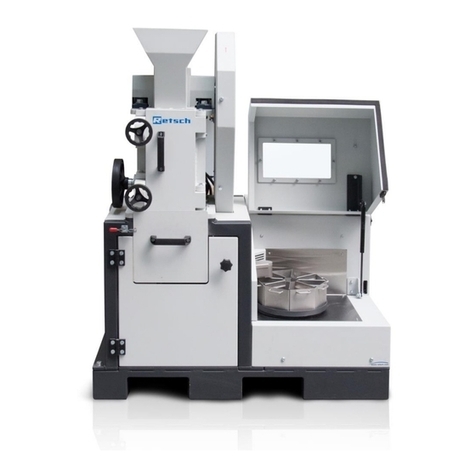
Retsch
Retsch ABP 250 manual
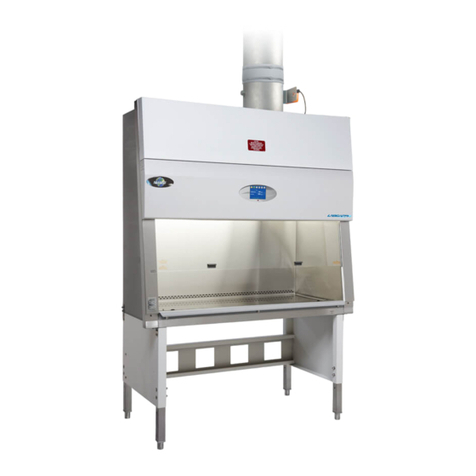
NuAire
NuAire LabGard NU-560E Series Operation & maintenance manual


